#sinus anatomy
Explore tagged Tumblr posts
Text
do not forget the eye!! your tear ducts drain into your nose :) the face bones/skull are one of lifes most beautiful horrors <3
the ear nose and throat being all connected is so heinous
#i love biology and anatomy its soooo fucked up bro#sinus are evil and should not be above your eye but alas!!!!
31K notes
·
View notes
Text
How come every bone has some weird name but there are two named frontal??
All the names are so odd but then they name two different bones the same name
They got Zygomatic, Ethmoid, Coccyx, Sphenoidal, and Hyoid
But then switch it up to frontal cranial bone and the frontal sinus bone
1 note
·
View note
Text
astro health notes pt.1
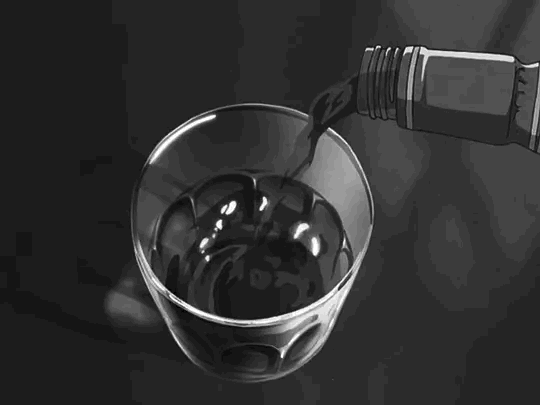
Astrology has long associated specific body parts and health predispositions with each zodiac sign. All the signs, Aries through Pisces hold sway over various physiological attributes and potential health concerns, shedding light on their connections to human anatomy and well-being.
Aries: Headstrong Prowess and Vitality
Ruling Anatomy: Aries governs the head, cerebral hemispheres, upper jaw, eyes, and face. The brain, skull, and facial features fall under its dominion. The energy of Aries infuses the thinking process and perception, contributing to sharp, commonsensical thinking and acute senses.
Health Connections: Individuals with a dominant Aries influence may experience issues like headaches, migraines, sinus conditions, nosebleeds, and neuralgia. Their active nature and energetic disposition demand a well-balanced diet for sustained health and vitality. Aries’ association with the head often leads to distinctive facial features, birthmarks, and scars. Additionally, their inclination towards risk-taking behavior might result in intriguing scars from past injuries.
Challenges: Under planetary afflictions, Aries natives might contend with brain fever, dizziness, inflammation of the cerebral hemispheres, and other brain-related ailments. Excessive blood flow to the head can cause varied symptoms like red, sore eyes, vertigo, and a tendency towards irritability and impatience.
Taurus: Endurance and Steadfastness in Health
Ruling Anatomy: Taurus presides over the neck, ears, throat, larynx, tonsils, thyroid gland, and cerebellum. It also governs the vocal cords, taste buds, and the area surrounding the neck.
Health Connections: Taureans exhibit endurance and steadfastness, yet they might be prone to ailments such as colds, sore throats, swollen glands, stiff necks, and minor neck injuries. Their penchant for good food might lead to weight concerns as they age, requiring discipline in diet and moderate exercise. The thyroid gland’s influence can significantly impact weight issues.
Characteristics: Taurus risings often possess distinct neck features, and their sturdy build with a strong posture sets them apart. They may have darker hair and eyes, with naturally curly locks. Under the influence of Venus, they tend to possess symmetrical and attractive facial features.
Challenges: Taurus individuals, when afflicted, may hold onto illnesses tenaciously due to their fear of sickness. They might experience ailments related to the nervous system, digestive disorders, and poor blood circulation, reflecting the Melancholic disposition associated with this sign.
Gemini: Nervous Energy and Communication Linkages
Ruling Anatomy: Gemini oversees the lungs, shoulders, arms, hands, bronchial tubes, and nervous system. Communication, flexibility, and subtle sensations fall within its purview.
Health Connections: Individuals influenced by Gemini might confront issues related to upper respiratory infections, bronchitis, asthma, and nervous disorders. Their communicative nature might be closely tied to their state of health, with anxiety and nervousness potentially impacting their well-being.
Distinctive Traits: Gemini ascendants are easily recognizable by their animated storytelling, expressive gestures, and bright, engaging eyes. They possess tall, lithe bodies, with graceful arms and hands, owing to the influence of Mercury.
Challenges: Geminis’ nervous energy can manifest in various health challenges, including respiratory problems and nervous disorders. Anxiety and stress may exacerbate their susceptibility to ailments, emphasizing the interconnectedness between their mental state and physical health.
Cancer: Nurturing Instincts and Emotional Health
Ruling Anatomy: Cancer governs the breasts, diaphragm, womb, lymphatic system, vagina, stomach, and right eye. It embodies nurturing, motherhood, and the Moon principle, associated with substance change but lacking vitality.
Health Connections: Cancerians might encounter weight gain in later years due to their fondness for food. Emotional stress, anxiety, and tension often cause digestive problems such as ulcers, gastritis, and digestive upsets. They might struggle with gall bladder issues, nausea, and gas pains, while also being susceptible to overindulgence in alcohol.
Characteristics: Cancer individuals exhibit a nurturing nature akin to motherhood. Their susceptibility to digestive issues and emotional stress underscores the impact of their emotional state on physical health.
Challenges: Afflicted Cancerians may suffer from dropsy, indigestion, and sclerosis. Symptoms such as dizziness, syncope, and watery or congested nose and sinuses can manifest, reflecting the sign's vulnerabilities.
For more info check out my blog in the bio or my insta 🤸🏿♀️
#astro posts#astrology notes#astro blog#astronotes#astro notes#astrology chart#astrology readings#astrology signs#astrology#astro community#astro observations#astroblr#astro placements#astrology observations#astro#aries#taurus#gemini#cancer#leo#virgo#scorpio#sagittarius#capricorn#aquarius#pisces
161 notes
·
View notes
Text
Need a sub who is going to let me forcemasc him and kick his fucking ass like 80s rough trade style. Like some real neanderthal low IQ bdsm. Like I want to put him in the hospital. LMAO
You like a dom when it's one of your skinny fucking chainsmoking cis boys, like you honestly think you're hard because you let some skateboarder who can't lift a spare tire smack you around a little bit.
Your problem is that you're scared because you don't know what pain is. So believe me when I say I'm going to teach you what pain is.
I am literally on steroids and I do this shit for my own enjoyment.
Have you ever been hit in your liver? Like right on your ribs, a real body shot? It's like somebody lights you on fucking fire from the inside out and your whole body burns worse and worse by the millisecond. And you can taste it. Like I'm making you suck on some pennies. Lmao.
When your nose bleeds it will taste bad but you should be fine provided it doesn't obstruct your breathing. When your nose gets broken, that sinus fracture won't hurt right away from the adrenaline but as soon as it wears off it hurts like fucking hell and you can't touch it without it crunching or cracking around under your skin. You will feel nauseous and then fucking sick at the way your face breaks in ways you didn't know was possible, pieces of your inner cheekbone breaking and getting loose in your eye socket, the devil's own human anatomy lesson. When you get knocked out by getting punched in the face you think you're fine for the first half second but when the momentum catches up and your brain hits the other side of your skull in your head it's good night from there. And after you come to your face will be valentine's red and pink and swollen and nigh unrecognizable and from there is just going to turn so many pretty colors you'll look like a goddamn renaissance painting.
I'm going to make you scared that you're gonna die. And then you're gonna be scared that you might not.
You can complain, you can scream, you can beg, try to run, try to fight back, hold your hands up, there's honestly no point because you know you're going to take it and you know you like it because I say you will so you will. You're a faggot. There is something wrong with you. If you didn't come to me to try to fuck you would have just spent your time trying to run away from the first chucklefuck who knew how to fight and had a problem with you. You made it clear that this is how you accept love, so I will make you wear it on your face.
I am not going to afford you the ability to hide behind a mild, vanilla, effeminate or weak front. I am going to hurt you so badly your friends and your family and your significant other can't even bear to look at you without feeling your pain as badly as you felt it. They can't hold your perfect pretty girly face in their mind anymore, even after you eventually heal your nose has been bent into a new shape and the symmetry your teeth grew into has been rearranged into a haunted graveyard of broken and missing teeth like tombstones. And you can't exploit their safe conditional acceptance anymore. And you have to find a way to live as an ugly fucked up man when you can't get by looking pretty and doing nothing.
And idk maybe after I'll let you suck my dick a little bit.
#forcemasc#autoandrophilia#forced masculinization#this one is very fight club im not a nerd i just box#boxing actually is very nerdy#also i learned to box well because i got assaulted. lots of lgbt men do this! like emile griffith#this is gruesome but idk what to tag this as#ftm bd/sm
89 notes
·
View notes
Note
Lots of medical turtle stuff down here, if you wanna use it. If not, feel free to ignore. I just freaking love turtles and reptiles and learn about their medical needs in my spare time since I plan to have a few some day.
So, interestingly, when blood is drawn from a turtle, it's usually drawn from the neck. Close above the shell, jugular vein area.
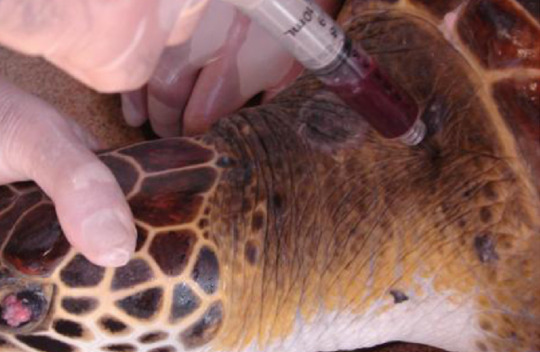
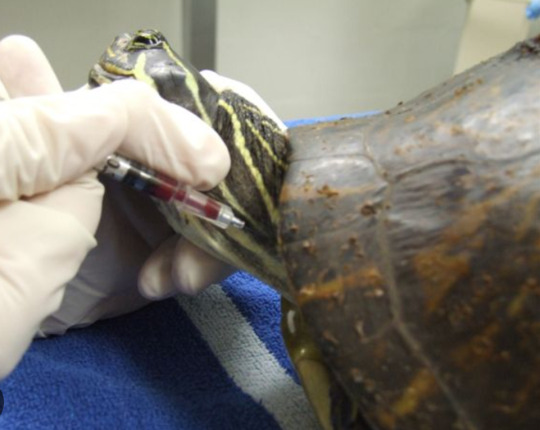
And sometimes from the same spot right above the tail. That vein is called the coccygeal vein, or the tail vein.
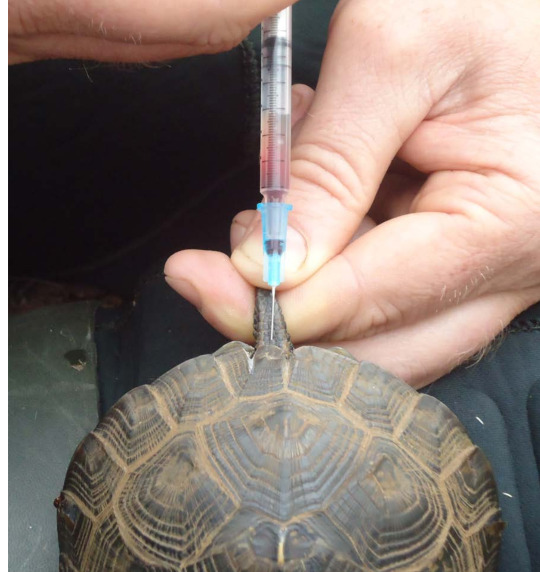
However, the ninja turtle boys are mutants, and anthropomorphic turtles, so their anatomy may be more similar to a human in terms of vascular and arterial (veins and arteries), so elbow/wrist may be more appropriate.
Or, secret third option, an in-between. Like the shoulder.
Honestly I'm not sure it even matters since we'd have no way of knowing for sure in the case of mutant humanoid turtles, but I don't think the shoulder would work realistically in any case here due to the difficult vein and artery placement there.
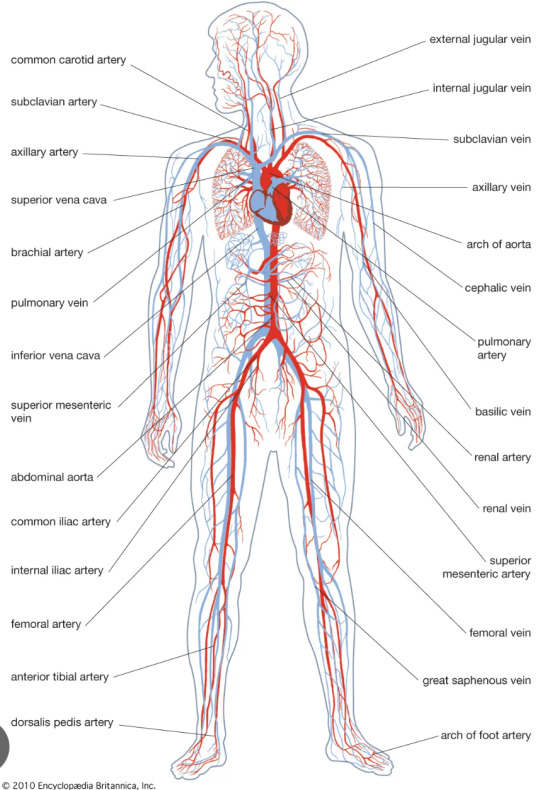
(I couldn't find any good vascular maps for a turtle so have a weird minor-detail one from a medical journal about sea turtle anatomy. Note: some internal structures vary between turtle species due to environment and body shape, but only slightly.)
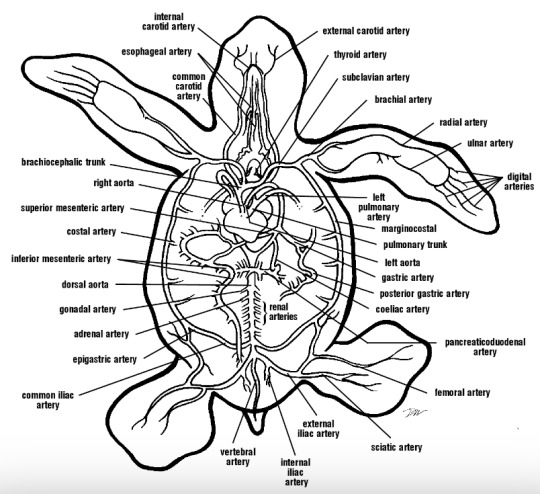
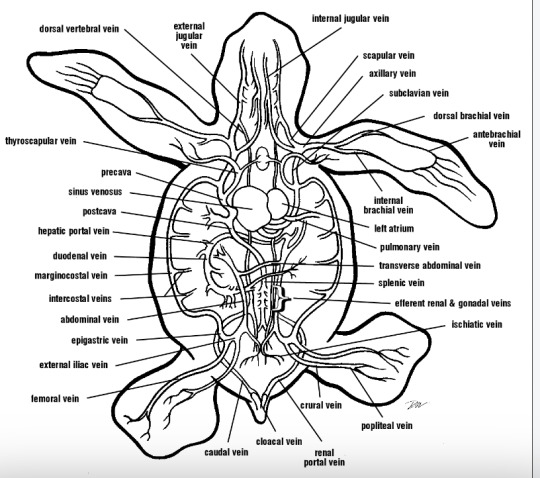
(Also note: there are two separate pictures due to the labeling. It's the same map, but there's so many things to label they had to make two.)
So, just for funsies, I thought you might like to know where they draw from with actual non-mutated turtles. Just in case.
Here's some terminology and other facts if you ever wanna use that:
The veins typically sought out for blood drawing in turtles are the jugular and tail vein, but a couple others may work. This is typically because most other drawing sites, like the arms, have a much higher chance of lymph contamination in the sample. The jugular is the least likely site to give this contamination.
It's not recommended to try to access the jugular when the head is in the shell, nor is it recommended to attempt to get the head out of the shell for the sample. In those cases, sedation is the preferred method. Mostly to not hurt the animal.
The tail vein is the second best option, and can be approached ventral or dorsal (from underneath or from the top).
If a turtle keeps their head in their shell and sedation is not an option, the subcarapacial sinus is used. It lies inside the carapace at the level of the cervical vertebrae. So basically right at the top above the neck at the juncture between the neck and the shell.
(medical article snippet below)
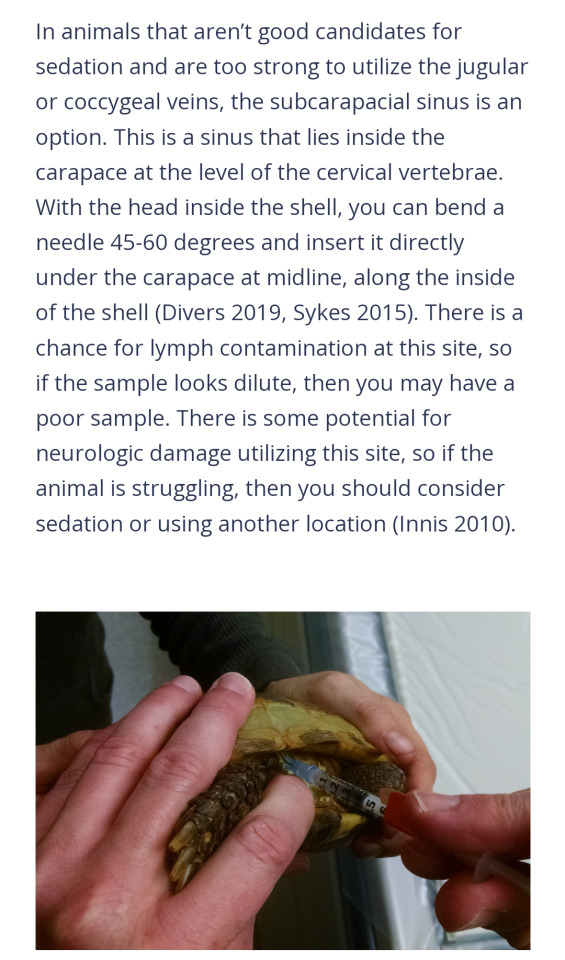
Here's another visual reference for the preferred spots
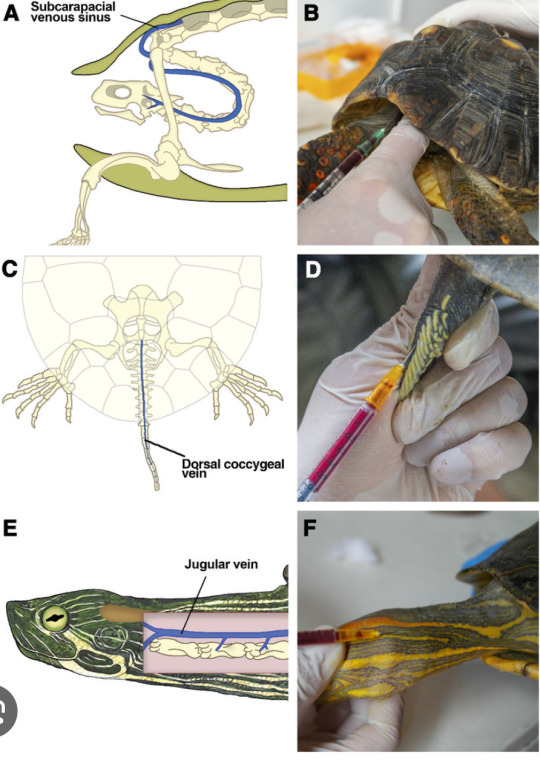
Hope this helped! Or if you don't feel like going through this much trouble for your "just for fun" comic, I hope you enjoyed learning something new! 😊
Woah! Thank you for this! I will definitely keep this in mind for the future of this project and/or any other turtle projects I do.
Thank you so much for going out of your way to write all this out for me! I found it actually pretty interesting! Maybe this will convince me to look up a little bit more about turtles in the future :33
59 notes
·
View notes
Text
Don’t know who needs to hear this, but hypospadias actually does not mean “urethra anywhere other than the tip of the penis on a person who has a penis.” That is a singular Type of hypospadias. Another type of hypospadias is vaginal hypospadias (sometimes referred to as “female hypospadias,” which is obviously intersexist but will yield more results if you want to research it). This is a type of persistent urogenital sinus that occurs in people with CTF anatomy where the urethra is located in the lower third of the vaginal opening or directly on the vaginal opening/goes through the hymen. Go forth and stop using definitions that conveniently exclude people with CTF variations.
18 notes
·
View notes
Text
reading about barnacle anatomy this morning blew my mind

Anatomy and physiology
Barnacles have a carapace made of six hard calcareous plates, with a lid or operculum made of four more plates. Inside the carapace, the animal lies on its stomach, projecting its limbs downwards. Segmentation is usually indistinct; the body is more or less evenly divided between the head and thorax, with little or no abdomen. Adult barnacles have few appendages on their heads, with only a single, vestigial pair of antennae attached to the cement gland. The six pairs of thoracic limbs are called cirri; these are feathery and very long. The cirri extend to filter food, such as plankton, from the water and move it towards the mouth.[8]

Acorn barnacles are attached to the substratum by cement glands that form the base of the first pair of antennae; in effect, the animal is fixed upside down by means of its forehead. In some barnacles, the cement glands are fixed to a long, muscular stalk, but in most they are part of a flat membrane or calcified plate. These glands secrete a type of natural quick cement made of complex protein bonds (polyproteins) and other trace components like calcium.[9]: 2–3 This natural cement can withstand a pulling strength of 5,000 lbf/in2 (30,000 kPa) and a sticking strength of 22–60 lbf/in2 (200–400 kPa).[8]
Barnacles have no true heart, although a sinus close to the esophagus performs a similar function, with blood being pumped through it by a series of muscles.[10] The blood vascular system is minimal.[11] Similarly, they have no gills, absorbing oxygen from the water through the cirri and the surface of the body.[12] The excretory organs of barnacles are maxillary glands.[13]
The main sense of barnacles appears to be touch, with the hairs on the limbs being especially sensitive. The adult has three photoreceptors (ocelli), one median and two lateral. These record the stimulus for the barnacle shadow reflex, where a sudden decrease in light causes cessation of the fishing rhythm and closing of the opercular plates.[14] The photoreceptors are likely only capable of sensing the difference between light and dark.[15] This eye is derived from the primary naupliar eye.[16]
Sexual reproduction

Most barnacles are hermaphroditic, producing both eggs and sperms. A few species have separate sexes, or have both males and hermaphrodites. The ovaries are located in the base or stalk, and may extend into the mantle, while the testes are towards the back of the head, often extending into the thorax. Typically, recently moulted hermaphroditic individuals are receptive as females. Self-fertilization, although theoretically possible, has been experimentally shown to be rare in barnacles.[26][27]
The sessile lifestyle of acorn barnacles makes sexual reproduction difficult, as they cannot leave their shells to mate. To facilitate genetic transfer between isolated individuals, barnacles have extraordinarily long penises. Barnacles probably have the largest penis-to-body size ratio of the animal kingdom,[26] up to eight times their body length, though on exposed coasts the penis is shorter and thicker.[25] The mating of acorn barnacles is described as pseudocopulation.[24][28]
The goose barnacle Pollicipes polymerus can alternatively reproduce by spermcasting, in which the male barnacle releases his sperm into the water, to be taken up by females. Isolated individuals always made use of spermcasting and sperm capture, as did a quarter of individuals with a close neighbour. This 2013 discovery overturned the long-held belief that barnacles were limited to pseucocopulation or hermaphroditism.[24]
Rhizocephalan barnacles had been considered hermaphroditic, but their males inject themselves into females' bodies, degrading to little more than sperm-producing cells.
#this is the craziest shit i've read in a long time#i yelled multiple times#these guys are lowkey the biggest freaks (complimentary) in the animal kingdom#out here having alien hermaphroditic sex with their giant dongs#injecting themselves into partners and then degrading into sperm cells#this is so... i need to lie down
12 notes
·
View notes
Text
Skull Fractures: Le Fort I-III
Le Fort fractures are a specific type of midfacial fracture which can be split into three types: Type I, Type II, and Type III. These three types vary in severity and presentation. They are most commonly caused by high-speed or high-impact forces.
Facial and Cranial Anatomy
Le Fort fractures of all types involve different bones which make up the facial structure. You can look up a picture of the skull if you don't know what I'm talking about, but you should have an idea of what's going on from. Anyways, the skull is 22 bones and that's too much to get into right now. Onto important stuff.
The mandible is not part of the skull and isn't part of what makes a Le Fort fracture, though facial trauma may also cause the fracture of this bone. It is also an important part of the facial anatomy and its misalignment with the other bones can help diagnose Le Fort fractures.
Le Fort Type I
Le Fort type I injuries are the least damaging type of Le Fort fracture, though they still cause significant damage to the facial structures. This type of fracture involves the maxilla and pterygoid plates (four structures that are up inside the skull/back of the mouth) primarily. Due to the involvement of the maxilla, it can also be referred to as a trans-maxillary fracture.
There are several mechanisms of injury for this type of fracture. Most commonly, it is caused by a downward blow to the face. This can be the result of a fall, assault (like stomping on someone's head), or motor vehicle accident, which causes the maxilla of the patient to impact a hard surface and detach from the rest of the facial structure.

The downward force on the face causes the fracture of the internal structures of the maxillary sinus as well as the pterygoid plates. The fracture extends to the maxillary antrum, or the antrum of Highmore, which is a large sinus cavity that sits superior to the upper teeth and posteriorly to the nose. All three walls of the sinus are fractured, and the maxillary structures break away in a palate-facial separation.
Type I fractures oftentimes present with swelling in the upper lip and ecchymosis (bruising) to the maxilla and cheeks. The most telling sign of maxillary dissociation is malocclusion of the teeth. This means that the upper teeth are not in alignment with the lower teeth, which can be seen in dissociations and fracture of the maxilla and mandible. The triangular area of the face that comes away from the cranium is made of the maxilla, palate, and pterygoid plates.
The soft tissue damage of this fracture is mostly within the oral cavity, sinuses, and nasal cavities. This can cause the respiratory ability of the patient to become compromised. Because of the damage to the nasal passages and the possibility of fracture of the inner bones of the skull, a nasopharyngeal airway (NPA) device is not recommended. NPAs are devices made of a pliable foam or rubber, which are inserted through the nares, and allow for the linkage of the nasal openings to the pharynx (throat). When heavy facial trauma, especially to the nasal area, is present, NPAs are not indicated. Instead, airway management should be done with an endotracheal tube, which goes into the trachea (windpipe). This bypasses the damage done to the oral or nasal cavities and allows for the establishment of respiratory function.
Other symptoms of the patient should be managed until they can reach a trauma center for further treatment, with the patient's airway, breathing, and cardiovascular function taking precedence.
Le Fort Type II
Type II fractures are more severe than Type I. They involve more facial structures and cause a greater portion of the face to separate from the skull. This type of fracture involves the nasion, which is commonly referred to as the bridge of the nose. It also involves the medial wall of the orbit and the inferior orbital rims. Importantly, this type of fracture does not involve the zygomatic bones (cheek bones).
This fracture is best traced beginning at the nasion. The fracture extends laterally to the medial wall of the orbit and downward into the inferior orbital rim. It then crosses downward into the maxilla. Inside of the structure, the fracture extends superiorly to the hard palate, and ends with the separation of the pterygoid buttress. The section of bone that breaks away from the cranium is pyramidal in structure.

The involvement of the orbit in this fracture increases the severity of this fracture because of the complexity of orbital bones as well as the involvement of the soft tissue of the eyes. The forces which are of a great enough magnitude to fracture this portion of the face can create severe damage to the delicate tissues inside the orbit, including blood vessels and the eyes themselves.
Type II fractures present distinctly from Type I fractures. In Le Fort Type II fractures, there will be mobility in the maxilla, but the nasal region will move with the maxilla away from the other facial structures. The increased severity also opens a possibility of cerebrospinal fluid (CSF) leakage from the nasal passages. CSF leakage can be confirmed using a piece of gauze to absorb some of the fluid. As the CSF dries, it will create a distinct two-ringed figure, which mucous does not. CSF is also very clear and watery compared to mucous, which is yellowish and sticky.
Due to the damage to the nasion and surrounding area, the intercanthal space (the distance between the corners of the eyes) has a high possibility of widening. This will lead to severe deformity of the normal facial structure. Bruising will be significant, with presentation of bruising on both orbital areas, or bilateral periorbital ecchymosis, sometimes called “racoon eyes.”
As with Type I fractures, an NPA is not indicated, particularly when CSF leakage is present. This indicates a fracture deep enough to compromise the integrity of the intracranial space. If an NPA is used in this case, even the soft tip of the device could worsen the intrusion into the cavity or cause severe damage to the sensitive nervous system structures. The airway should be established using an endotracheal tube instead. The patient should be transported with haste to the nearest trauma center.
Le Fort Type III
Type III fractures are the most severe type of Le Fort fracture. This type is also called a full facial-cranial separation. It involves the nasion, two walls of the orbit, the orbital rim, the zygomas, and the pterygoid plates.
The path of this fracture can be traced starting at the nasion. From there it extends laterally through the medial orbital rim and orbit. The fracture extends horizontally across the entire orbit and to the lateral rim. Finally, it extends downwards across the zygomatic arch and through the superior pterygoid plates. This fracture extends bilaterally through both sides of the facial structure5.

Due to the fracture extending horizontally through the orbit, there is a great risk of damage to the soft tissues of the eye. The fracture also extends parallel to the base of the cranium, and will cause a complete separation of the midfacial skeleton from the cranium. Because of this extreme dissociation, there is an increased risk of cerebrospinal fluid leakage. This leakage can result in infection or serious brain injury.
This type of fracture is most typically caused by large amounts of force to the nasion and superior maxilla. This force is of a great enough magnitude to cause a fracture to extend through the entirety of the facial structure in a posterior and downwards direction.
Many signs from Type I and II carry over, including bilateral periorbital ecchymosis, orbital edema, and buccal ecchymosis. However, Type III presents uniquely with a sign commonly called “dish-face deformity.” This condition results from the breakdown of the structure of the face, and results in a lengthened and shallowed face. There may also be a condition known as “orbital hooding” present, which is the drooping of the upper eyelid commonly seen when zygomatic structure is compromised. Battle’s sign may also be seen, which is the bruising of the mastoid region, or the region behind the ear. Enophthalmos, the sinking of the eyes posteriorly into the sockets, may also be seen. This is due to the severe damage to the orbital area. CSF may also leak out of the ears and nasal passages, called CSF otorrhea and CSF rhinorrhea, respectively. Blood may also be within the inner ear in a condition called hemotympanum.
The severe damage to the facial bones, along with intracranial hemorrhaging and CSF leakage will most likely cause a patient with a Type III fracture to be treated as critical. Airway integrity should be maintained with an endotracheal tube, but if the oral airway is compromised, stabilization can be difficult without a tracheostomy. A tracheostomy is a procedure where an opening is made in the neck into the trachea, where a breathing tube can be inserted. This bypasses any oral damage and allows for the respiratory function of the patient to be secured. The patient should be rushed to a trauma center, as the signs presenting give an impression of a condition that can be lethal.
Treatment
As with any trauma patient, those with Le Fort fractures should be stabilized to ensure the continuation of life before any effort is made to repair the damage to the face. This gives the patient’s airway, breathing, and circulatory systems precedence in their care. Once the patient reaches the emergency room of what is hopefully a trauma center, more specialized care can begin. This includes testing, scans, and stabilization.
Computerized tomography (CT) scans are very useful to determine the extent of the fracture and the type. These scans use several x-rays and an interpreting computer system to create several two-dimensional slices of the structures captured. This is important in severe facial injuries, as simple film x-rays do not typically provide enough data to accurately diagnose and see all of the damage done to the face. In Le Fort fractures, the most appropriate type of CT scan ordered is a non-contrast, fine cut scan with axial cuts. Contrast is a substance injected intravenously that allows for a better view of body structures on the scan, but it is not used in this case. Typically, contrast used in trauma cases is for abdominal injuries. The CT scan should be fine cut, which means that the slices of data gathered from the patient are 2 mm in width. This means more can be seen from the scan.
The two main areas of treatment in facial fractures are reduction and fixation. Reduction is the process of putting the structures back where they are meant to sit. Reduction can either be open or closed. Open reduction requires the “opening” of the face through surgical means. Typically, this means that the fracture was too complex to be reset through external manipulation. A closed reduction is done without exposing the bone. This is done externally through manipulation of the structures. Fixation is the process of keeping the bones in the correct place, typically through the use of metal plates, wires, and screws.
Intermaxillary fixation can be used to repair or stabilize the fracture. This should be done after all CT scans are completed. Intermaxillary fixation uses metal pieces screwed to the maxilla to demobilize it. Typically, metal plates are also screwed to the mandible and wire is connected between the mandible and the maxilla. This will reestablish proper occlusion of the teeth. Intermaxillary fixation can be used to stabilize the face while other surgeries are done, or as the treatment itself.
Facial reconstruction is most likely with Type III fractures. In a broad sense, facial reconstruction includes the reduction and fixation detailed previously. However, it also includes more fine and cosmetic reconstruction. After a more severe fracture and the resulting fixation, the skin and formation of the face can be altered from the patient’s original appearance. Due to this, there may be more extensive work required by a plastic surgeon after the initial treatment to repair the bone structure.
The goals of the fracture repair are to reestablish proper structure and restore the integrity of the face. The correct facial projection should be reclaimed, as to correct any deformity or dish-face condition. The sinus cavities should also be repaired so that they have proper function and location within the facial structure. The realignment of the orbital and nasal structures is also important to the overall soundness of the facial structure and function. Finally, malocclusion should be remedied, as proper occlusion of the teeth is necessary for not only facial structure, but the function of the teeth and mouth in chewing food.
Outcomes
The recovery of this type of fracture can be long and difficult, but the ultimate outcome is generally good. Mortality rates of patients with complex facial fractures, which includes Le Fort fractures, are estimated around 11.6%. Mortality of patients with simple facial fractures is estimated around 5.1%. For Le Fort fractures specifically, there are different mortality rates for each type. For Type I, there is a 0% mortality rate. For a Type II fracture, there is a 4.5% mortality rate. For Type III fractures, there is an 8.7% mortality rate.
Besides death, disability can also be the result of Le Fort fractures. The following conditions have been reported as a result of Le Fort fractures: difficulty breathing (31% of patients), difficulty chewing (40% of patients), vision issues (47% of patients), double vision (21% of patients), and excessive tearing and poor eye drainage (37% of patients). These disabilities can greatly affect the ability of the patient to return to normal activities. For Type I and II fractures, 70% of patients were able to return to work. For Type III fractures, only 58% reported being able to return to work. The facial deformities resulting from these fractures and their repair have an impact on the patient’s mental wellbeing. Of patients who had facial surgery, 89.1% reported satisfaction with the outcome of their appearance.
End Notes
Wow this was fucking long, wasn't it? I guess I just got going and couldn't stop. Now you know everything you need to know about Le Fort fractures, which was probably nothing. But anyways, I wanted to include the outcome of severe injuries like these because I feel like in fiction I don't see it enough. Like if you get that fucked up you're gonna need some help for a while. I also think I see too many NPAs in patients that don't need them or shouldn't have them, so I think that might be some valuable information. I'm gonna write on the structure of the nose eventually, but for the love of god don't stick anything up there, especially if someone has head trauma.
Thanks for reading :))
#medicine#med studyblr#medblr#head injury#whump writing#medical writing#fractures#skull fractures#whump#trauma#medical school#med student
6 notes
·
View notes
Text
Relief, Part Two
The vampire brain rot continues. A/starion once again finds himself needing T/av's assistance when he comes down with a nasty cold...
Tav had given up all hope of a productive evening.
She had withdrawn to her tent for the night, intending to work on some potions with the latest batch of herbs she had gathered. It was a task she always found calming; sitting with fragrant herbs spread before her, a book on herbalism and potion-making in her lap, enjoying the soft glow of her lantern and the background noise of the camp settling for the night.
And then Astarion had joined her. Astarion and his absolutely miserable cold.
It had been obvious from that morning that the vampire was sick. Paler even than usual, he kept his distance from the rest of the group, but not far away enough to hide that ticklish cough, those damp sniffles, those frequent shivers. During a fight the day before he had been knocked into a river, and with camp hours away, had spent most of the day trekking about in cold, wet clothes. Now he was suffering the consequences. Only Tav knew the true extent of those consequences, though…
Since their time in the Underdark, Tav had become intimately aware of a peculiar feature of the vampire’s anatomy. Certain reflexes had been dulled by his undead condition, and sneezing was one of those reflexes. Things still bothered his nose, certainly. The constant haze of spores in the Underdark, the scent of garlic, dust, and now a cold in the head. But it was rare for that irritation to bring on a sneeze; at least, not without great effort. Since helping him get relief from the spores, and accidentally revealing her own peculiar interest, Tav had more than once found herself offering to help a desperately itchy Astarion sneeze, providing great satisfaction to them both.
It was that satisfaction Astarion had come seeking tonight, Tav was sure of it. But gods forbid the stubborn vampire actually ask for help. Instead, he lounged beside her, watching her work, the very picture of misery. A blanket draped around his shoulders seemed to be doing little to ease his chills, and his lips were chapped from breathing through his mouth. And his poor nose… It twitched and wrinkled near constantly, and had turned pink from being constantly dabbed at with a handkerchief. He sniffed almost constantly, and when he spoke his voice was heavy with congestion. And, every now and then, his eyes would close, his lips would part, he would tilt his head back, chest expanding with a great, expectant breath, and… Nothing.
It was all Tav could do to keep from squirming.
“Perhaps you ought to take a nap,” she suggested, after a bout of hitching turned into a yawn instead. “You might feel better after you get some sleep.”
“I can’t sleep like this,” Astarion grumbled, rubbing his nose through the handkerchief. “Couldn’t sleep all last night, from the moment I felt it setting in. Every time I started nodding off, I… I’d start to…”
Tav swallowed dryly, watching the display. She was almost sure Astarion was doing it on purpose. He lowered the handkerchief, giving her an uninhibited view of his flaring nostrils, and wrinkled his nose, trying to bring on that desperately needed sneeze. One great hitching breath… Two… And…
“Gods damn it all! Why does this have to be so miserable?”
He blew his nose angrily, and Tav flinched at the sound.
“Don’t blow so hard! If you think you’re miserable now, just wait til you give yourself a sinus infection.”
“Easy for you to say. Ugh, I hate this! My head feels so full it could burst, and my nose is a perfect nightmare!”
For you, perhaps, Tav mused, watching him rub angrily at said nightmare. Sighing, she set down her book at last, and patted her lap.
“This is going to drive us both mad at this rate. Here. Lie down, and let me help.”
Astarion gave her a look of gratitude from over the top of his handkerchief, and did as he was told, laying down with his head in her lap. Trying to keep her mind on the problem at hand, Tav ran a gentle finger down the length of his nose, feeling it twitch irritably. Astarion sniffled and let out a gasp of irritation, and tried to bring his handkerchief to his nose. Tav pushed his hand back down, giving him a reassuring smile as she pulled a clean handkerchief from her sleeve. She dabbed gently at his nostrils, which had begun to look rather damp.
“Easy. Just try to relax, and let me take care of you.”
“I'll relax when I'm free of this damned itch,” Astarion groaned, and let out a few ticklish coughs. “Do hurry up and bring out that feather of yours!”
Tav shook her head, turning her attention to the herbs she’d been working with.
“You’re a bit too… damp, for a feather, I think. Let me find something a bit sturdier.”
Keeping the handkerchief pressed to his nose with one hand, feeling his nostrils twitching restlessly, Tav selected a frond of dried grass. Delicate enough not to hurt, but sturdy enough to get the job done. Astarion snuffled desperately as she lowered the handkerchief and set to work. Starting slowly, she twirled the grass across his nostrils, and was immediately rewarded with an eager hitch.
“Hhh! Hhh-Hh! Hhhnn…”
It was never that easy. Astarion’s nose was as stubborn as the rest of him. Not wanting to tease him when he already felt so wretched, Tav gently poked the grass further into one aggravated nostril. Astarion gave a flustered snuffle, and raised his handkerchief as his nose began to run. Tav beat him to it, pressing her own handkerchief lightly against his nose, rubbing gently, still twirling the stalk of grass all the while.
“Easy… Let me take care of you…”
Astarion couldn’t answer, his breath snagging on a useless round of hitches. A tear leaked from his eye, and Tav dabbed it gently away.
“HHnn… Hhm… Hhh! I… I think… it’s…”
Tav pressed the grass deeper, seeking out the point that would release all that irritation, and found it. As Astarion drew in one last desperate breath, she covered his nose and mouth with the handkerchief, just in time.
“HHhh… Hh’tshhoo!”
Astarion sniffled damply in the aftermath, nose nuzzling into the handkerchief, and blinked up at Tav, dazed. The sneeze had been a rather weak one, and didn’t seem to have scratched the itch.
“I… I think I need more, darling…”
“Of course. Let’s try again.”
Tav set to work again, trying to find a more sensitive spot. With Astarion weakened by his cold, she was evidently going to have to work harder to bring on the kind of relief he needed. Guided by her skilled fingers, the blade of grass twitched and twirled, and Astarion hitched and sniffled and gasped, but seemed unable to bring on another sneeze. Tav withdrew the grass, bringing on a flustered snuffle and a few coughs, and set about teasing the other nostril.
“Stubborn thing…”
She tickled and twitched and twirled away with the grass, dabbing occasionally with the handkerchief, and Astarion squirmed in her lap, chest rising and falling with hitching breaths, sniffling and gasping, eyes growing decidedly teary as the irritation grew. Tav began to worry she might only be able to bring on that one weak, unsatisfying sneeze. And then, finally, the grass tickled just deep enough.
“Da-ahh-rling, I… think… I… IhhhHHSHOO!”
Again Tav pressed the handkerchief over his nose just in time. As she began to lower it, Astarion took hold of her wrist, keeping it there.
“No… I… Ahhh… Hhh… HHRASSHOO!”
A shiver ran through him after that one. A shiver ran through Tav too, for rather different reasons.
“Need me to keep going?”
“No, I think… Think there’s more… Hh! Hhh-hh-hHHSHOO!”
Tav withdrew the grass and used her now free hand to wipe away irritated tears, then gently ran her fingers through white curls.
“That’s it, you’re doing well. More?”
“HhhHHSHOO!” Astarion sneezed in agreement, and gave a series of damp sniffles. Tav pressed the handkerchief more firmly against his nose, feeling it twitch and wriggle, bringing on the next desperate “HHRRASHOO!”
Sneeze after sneeze burst out. Slower than the allergic fits brought on by dust or garlic, and judging by the way Astarion was beginning to breath more heavily, rather more exhausting. At last, with a final, exhausted “Hhishhoo!”, Astarion opened his eyes, and, taking the handkerchief from Tav, wearily sat up and blew his nose.
“Thank you, darling. I feel… Well, I still feel wretched, but that’s one misery resolved. You… enjoyed that, I take it?”
Weary from his cold, his smile as he took in Tav’s flushed cheeks was more fond than seductive. In answer, Tav leaned in and pressed a gentle, featherlight kiss to his long-suffering nose, letting out a surprised giggle as doing so prompted a ticklish “Htshhoo!”.
Astarion raised the handkerchief too late, and if there had been enough blood in him, Tav suspected he might have blushed.
“Ah! Sorry about that, darling! Although, given your… peculiarities, perhaps I ought to say ‘you’re welcome’?”
Tav let out a snort of laughter, and leaned in to kiss him properly this time… Only to pull back in alarm as Gale’s voice sounded outside the tent.
“Astarion! Might I suggest you take something for that cold, rather than keep the whole camp awake?”
Tav let out an embarrassed giggle, and called back before Astarion could snap something rude in reply.
“Don’t worry, I’ll see he’s well taken care of!”
As the wizard’s footsteps retreated, Astarion gave her a rather more flirtatious smile.
“You will, will you?”
Tav leaned in closer, but instead of kissing him this time, picked up the fallen blanket and pulled it around his shoulders once more. His seductive act dropped, and he gave an embarrassed cough that brought on several more.
“I will. But not like that. You need to sleep this cold off. Let me get back to my herbs, and I can make you something to help. And if you’re feeling better tomorrow… Well, then. Let’s see what morning brings.”
49 notes
·
View notes
Note
if i can ask, isnt being intersex something youre usually medically diagnosed with? how can you self-dx something like that?

I think you missed this in the post. I am personally diagnosed. I think you need to learn about the history of intersex people and diagnosis! A whole lot of people don’t know they’re intersex if they’re not told. They know their bodies and they don’t think of it as “different”. My doctors wouldn’t see me at all until I had my hormones checked and it was awful! I wouldn’t have known otherwise! I would have been unknowing if I wasn’t turned away from a normal ass checkup. And now that I’m diagnosed I honestly have the worst problems just getting medicine for a sinus infection
https://www.instagram.com/clubintersex/
#I just saw this literally 24 hours later but I been busy#anyways! support for y’all that can’t get properly diagnosed ilu lots#saying this Again: my diagnosis is personal#Thank You#asks#anon
6 notes
·
View notes
Text
64 notes
·
View notes
Note
you mentioned inherent nasal anatomy causing wet nose blows i am intrigued
what kind of nasal anatomy stuff?
do they (Demetrius especially) have any like, sinus issues?
A while back I did a post showing the biological like internal workings of them both. https://www.tumblr.com/roguesnezblog/710100461389217792/nose-anatomy-of-demetrius-and-weedle-i-compared?source=share Theres a lot of surface area for things to get trapped inside, also very big sinus's. Demetrius actually has two. Weedle has a lot of trouble. But Demetrius? He does have major issues, but he's got a lot more will power than Weedle to hold things back or ignore it. Generally though what it's like for Demetrius his sense of smell is constantly on? cuz of that he's sensitive to anything thats strong or his body rejects. Makes it damn hard to get through a day without Percy doing a lesser restoration on him.
8 notes
·
View notes
Text
Heart Anatomy
The human heart is a fundamental organ of the cardiovascular system that is responsible for pumping blood throughout the body, supplying oxygen and nutrients to organs and tissues, and removing waste and carbon dioxide. Although it is a small organ, its function is essential for our survival.
The anatomy of the human heart is impressive. It is made up of four chambers: two atria and two ventricles. The atria are the upper chambers of the heart and the ventricles are the lower chambers. The right atrium receives blood from the body and sends it to the right ventricle, while the left atrium receives blood from the lungs and sends it to the left ventricle. The ventricles are responsible for pumping blood to the lungs and to the rest of the body, respectively.
The human heart also has an electrical conduction system that controls its rhythm and heart rate. The sinus node is the heart's natural "pacemaker", located in the right atrium. It is responsible for generating the electrical impulses that cause the heart to contract. These impulses travel through a system of specialized cells found in the walls of the atria and ventricles, known as the electrical conduction system.
The physiology of the human heart is equally impressive. During the cardiac cycle, the heart goes through two main phases: diastole and systole. During diastole, the heart relaxes and fills with blood. During systole, the heart contracts and pumps blood into the arteries.
The heart rate is the number of times the heart contracts in one minute. This rate is regulated by the autonomic nervous system, which is divided into two branches: the sympathetic nervous system and the parasympathetic nervous system. The sympathetic nervous system increases the heart rate, while the parasympathetic nervous system decreases it.
In conclusion, the human heart is a fundamental organ for our survival, with an impressive anatomy and physiology. It is important to take care of our heart through a healthy lifestyle, including a balanced diet, regular exercise and avoiding harmful habits such as smoking and excessive alcohol.
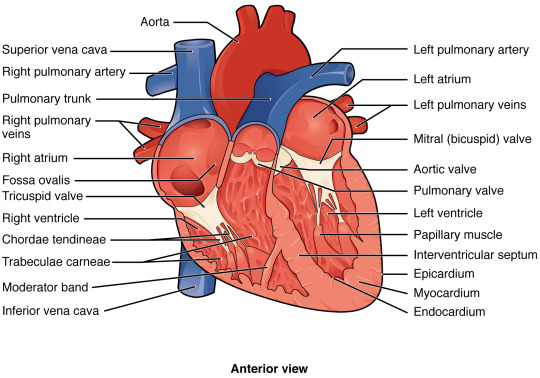

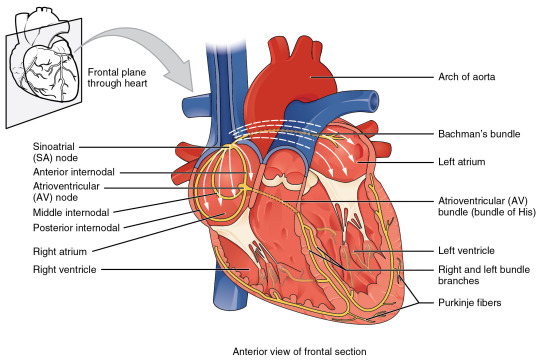
#anatomy#human anatomy#medicine#health#public health#healthcare#nursing#doctors#physiology#humanphysiologynotes#academiclife
17 notes
·
View notes
Text
astro health notes pt.4

Capricorn: Limits and Longevity
Ruling Anatomy: Capricorn rules the skin, body hair, ligaments, joints, knees, and spleen, emphasizing limits and resource protection.
Health Connections: Known for longevity, Capricorn individuals might face bone, joint, and knee-related issues like rheumatism, arthritis, stiff joints, and orthopedic problems.
Distinctive Traits: Capricorn ascendants age gracefully, sometimes appearing older in youth and younger in later years. They have high cheekbones, strong noses, and a bony appearance.
Challenges: Melancholic disorders like neurovegetative dystonia and cerebrovascular issues may affect Capricorns. Their pensive, moody nature can contribute to stress-related skin problems and cerebral blood supply issues.
Aquarius: Air and Circulation
Ruling Anatomy: Aquarius governs shins, calves, ankles, forearms, and the circulatory system, relating to air's elimination from the body.
Health Connections: Unique facial features, tall stature, and a tendency to appear awkward stem from their stoic Saturn rule. They might suffer from excess blood-related issues and high blood pressure.
Distinctive Traits: Aquarius ascendants have high foreheads, demure half-smiles, and a calm, detached appearance, often appearing a bit clumsy due to restless energy.
Challenges: Excessive blood can lead to drowsiness, pressure behind the eyes, headaches, and swelling in the eyes. Their predisposition to high blood pressure might cause various cranial disorders.
Pisces: Relaxation and Sensitivity
Ruling Anatomy: Pisces rules over the feet, pituitary and pineal glands, reflecting duality and tissue softening.
Health Connections: Pisceans often suffer from colds, sinus issues, water retention, and emotional illnesses due to their sensitive nature. They tend to overindulge and require moderate habits for good health.
Distinctive Traits: Dreamy expressions, soft faces, and sensitive eyes characterize Pisces ascendants, often appearing as old souls with graceful feet and ankles.
Challenges: Similar to other signs, Pisces may experience sluggishness, dulled senses, and excessive salivation. Severe cases might lead to dizziness, faintness, or loss of consciousness, reflecting their vulnerabilities.
for more info follow me here! 🤸🏿♀️
#astrology chart#astrology readings#astro#astrology signs#astrology#astro blog#astro community#astro notes#astro observations#astro placements#astro posts#astroblr#astrology notes#astrology observations#astronotes#astro stuff#aries#cancer#gemini#leo#virgo#libra#taurus#capricorn#aquarius#pisces#sagittarius#sensualnoiree
137 notes
·
View notes
Text
Hello everyone! Damn, the paddlefish article has really brought a lot of new folks to this blog! Welcome everyone, and thank you so much for joining this lovely little project of mine--I am so grateful that so many people have taken an interest in my work and in the species I want to help protect.
Since there are so many new folks here, I wanted to give a brief rundown on the articles I've written so far. In the last year and a half of this project, I've been able to write about seventeen awesome and unique species that are in need of further conservation attention. Here are some links to learn more about them:
Olm (Proteus anguinus): the OG and mascot for the site, this eyeless salamander manages to survive in its pitch-dark cave biome through incredible sensory abilities and supernatural patience.
Indian Purple Frog (Nasikabatrachus sahyadrensis): this comically-ugly creature is also incredibly mysterious, spending its entire life underground and only emerging for a single day each year.
Pygmy Hippo (Choeropsis liberiensis): this secretive, pig-sized mammal is the only surviving relative of the mighty river hippo, but lives a completely different lifestyle from its much more famous cousin.
Scaly-Foot Snail (Chrysomallon squamiferum): one of the weirdest animals on the planet, this snail grows a shell reinforced with iron and lives around hydrothermal vents deep beneath the surface of the Indian ocean.
Kaua'i Cave Wolf Spider (Adelocosa anops): this blind cave spider is one of the rarest arthropods on Earth, and lives in tunnels carved by lava flows beneath the surface of the Hawaiian Island of Kaua'i.
Shoebill (Balaeniceps rex): this huge African water bird uses its tremendous beak like a guillotine to smash and decapitate its prey.
Largetooth Sawfish (Pristis pristis): this relative of sharks and rays has a tremendous nose lined with teeth which it uses to dig up and swipe at prey, but that's not the only thing its nose is good for.
Takin (Budorcas taxicolor): this large goat relative is quite possibly the most mysterious large land mammal on Earth, as it lives deep in the forested mountains of China, India, and Bhutan.
Zacatuche (Romerolagus diazi): also known as the "volcano rabbit", this adorable little fellow is an excellent gateway into understanding the benefits of grasslands to ecosystems and human settlements alike. Done in collaboration with Mexico'a CONANP.
(tambien en español)
Secretarybird (Sagittarius serpentarius): this badass raptor stalks the African savannah, using its powerful legs to deliver one of the fastest and most accurate kicks in the animal kingdom (and yes it's also the bird from Aggretsuko).
Manchineel (Hippomane mancinella): the first plant written about on Consider Nature (though certainly not the last), the manchineel is quite possibly the most toxic tree in the world, with every part of its anatomy steeped with a variety of noxious substances.
Gharial (Gavialis gangeticus): this crocodilian is a fish specialist, using its long, slender snout like a rapier to cut through the water and snag its prey.
Vaquita (Phocoena sinus): the most-endangered mammal on the face of the Earth, the Vaquita is a tiny porpoise that has gotten caught up in the black market trade of an extremely valuable fish bladder. Done in collaboration with Sea Shepherd International.
Pekapeka (Mystacina tuberculata): this tiny bat species is one of only 2 mammals native to New Zealand and spends more time on the ground than any other bat species in the world, despite being able to fly.
Angular Roughshark (Oxynotus centrina): this shark is native to the coasts of Western Europe and Africa, where it lives over a thousand feet beneath the waves and is rarely seen by people.
Marine Iguana (Amblyrhynchus cristatus): these iguanas are the only seafaring lizards in the world, and have developed a variety of remarkable adaptations to survive the extreme conditions of the Galapagos Islands.
And as always, if you have any suggestions, questions, or just want to say hi, you can DM me here or email me at [email protected]. Welcome, and thank you for your support.
4 notes
·
View notes
Text
Writing Andalite anatomy looking at anatomical diagrams, asking the question “what would you call the maxillary sinus cavity if it extended into the tongue and jaw area?”
13 notes
·
View notes